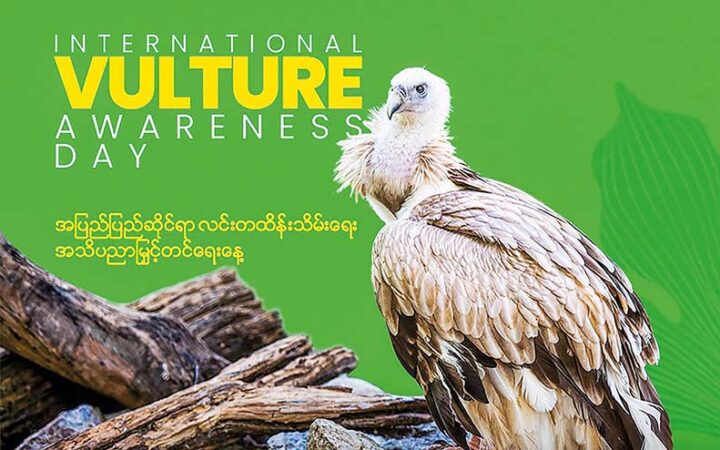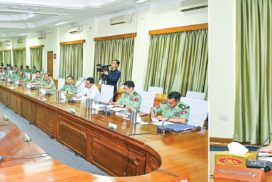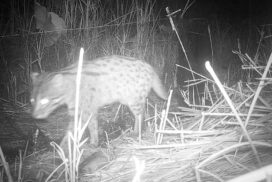The population of vulture native to Myanmar, a critically endangered animal species, is declining and conservation measures are being carried out by spotting their habitats, an official from the Biodiversity and Nature Conservation Association (BANCA) told The Global New Light of Myanmar (GNLM) on 5 September.
The conservation organizations BANCA, WCS, WWF, FFI, MBNS and FoW formed a Myanmar Vultures Working Group to conduct research and conservation works by collecting the number of animals and educating locals to change attitudes toward vulture conservation.
Six species of vultures are found in Myanmar, but only three species — white-rumped vulture (Gyps bengalensis), slender-billed vulture (Gyps tenuirostris), and red-headed vulture (Sarcogyps calyus) — are native to Myanmar and are on the brink of extinction. Other three species are migrating birds.
Yangon Zoo called for the public on 2 September to participate in conservation works of vultures which are also dubbed as ‘Nature’s Clean-Up Crew’ to appreciate their role of balancing the ecosystem and their lifestyles that contribute towards a clean environment and curbing infectious diseases. The zoo made the call on their Facebook page for International Vulture Awareness Day which is celebrated on the first Saturday in September each year.
“Vultures are found in Kachin State, Sagaing Region, Magway Region, Chin State and Shan State, but their population is declining. Currently, the birds are only found in Kachin State, Shan State and Sagaing Region. A total of 23 vulture species are found in various parts of the world. Six species found in Myanmar are white-rumped vulture (Gyps bengalensis), slender-billed vulture (Gyps tenuirostris), and red-headed vulture (Sarcogyps calyus), Himalayan Vulture (Gyps himalayensis), Egyptian Vulture (Neophron percnopterus) and Cinereous Vulture (Aegypius monachus),” an official from BANCA said.
Despite research conducted by WCS, FFI and BANCA, the exact number of vultures in Myanmar is still unknown.
“We used to put carcass of cattle in our effort to count the number of vultures, but we no longer use it. We will go to the places where the birds are spotted. The next thing is to educate local people about vultures,” he added.
The environmental changes, the dwelling of people in the areas around habitats of vultures, the scarcity of food and the habits of vultures eating animal carcasses died of poisoning pushing more than a half of 23 species of the birds to an endangered state. — ASH/TH
Population of Myanmar vulture declines prompting conservation efforts
- September 09, 2023
- 592














